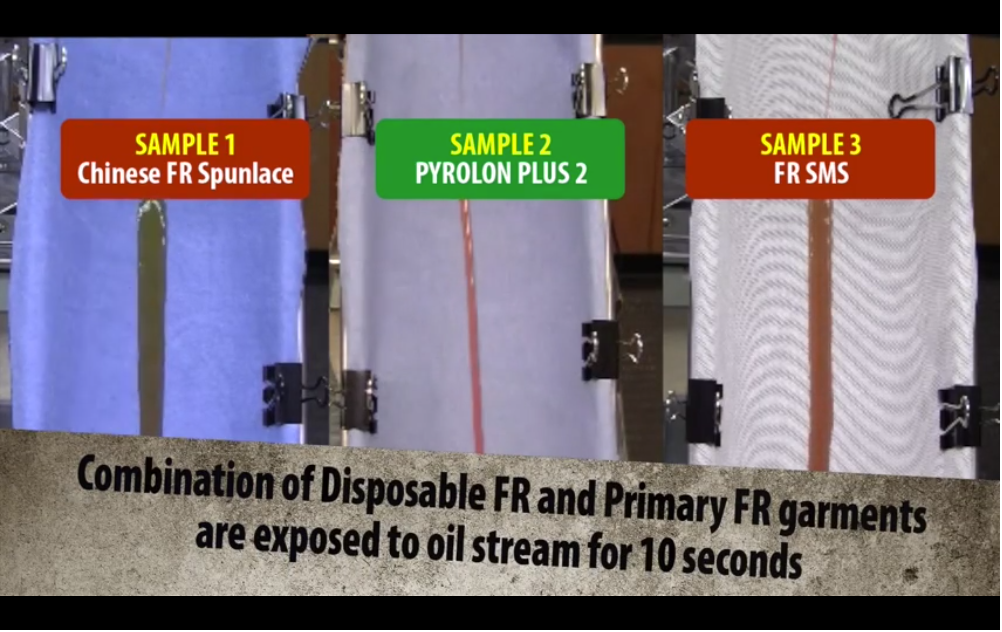Repellency is an important factor in the effectiveness of disposable secondary FR garments and should be a primary driver in purchase decisions. Watch a product comparison video that displays repellency performance in vertical flammability tests.
Disposable secondary FR garments are designed to be worn over primary thermal protective garments (TPG’s). As shown in the video above, they are tested with a simple vertical flammability test that identifies the fabric’s repellency performance and response to flame. Water, alcohol and oil are good indicators of the ability of a disposable fabric to protect the wearer, or in the case shown in the video, protect the primary protective garment worn beneath. Among many other industries, FR disposables are used commonly on petrochemical sites where this is a vital issue because if oil or other flammable contaminants penetrate through to the thermal protective garment beneath, it can dramatically alter the thermal protective properties. Here are a few factors you may not have known about the importance of repellency’s effect on flammability and thermal protection:
Flame resistant disposables are intended to provide liquid & dust protection when worn over a primary TPG. Repellency is a critical attribute of FR disposable garments because their main function is to protect and extend the life of costly primary flame resistant garments worn beneath. When worn in refinery, lab, utility and maintenance work places, FR disposables should provide a barrier from hazardous and non-hazardous particles and liquids.
Flame resistant should not be confused with flame and heat protection. Disposable FR garments are not designed to offer protection against heat and flame. For this reason, garments such as these should never be worn next to the skin.
An increasing number of FR disposable garments are available that have poor repellency to oil and other chemicals. Quality FR disposables should NOT contribute to additional burn and / or injury in the event of fire or electric arc. Inferior fabrics that are oftentimes used in secondary disposable garments present repellency failure and fabric melting issues which ultimately result in increased ignition and burn issues.
A disposable garment’s repellency performance plays an important role in regard to flammability and protecting the wearer’s primary TPG. During wear, a secondary FR disposable garment will oftentimes be splashed and contaminated with flammable liquids such as oil. Garments that have poor repellency are more likely to absorb hazardous and non-hazardous chemicals that will affect their flammability properties. Results when a garment has been contaminated can be unexpected.
A secondary FR disposable garment’s repellency rating should be one critical factor considered when determining which product is the best choice for your workplace. Learn more about the revealing product comparison test showing various product fabric performance outcomes that could have a significant impact on the protection and safety of your primary FR garments and most importantly, the wearers.




